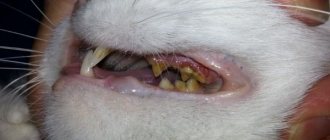Which spider to choose for home keeping
There are about 900 species of different tarantula spiders. Don't rush to buy whatever you like. If you have no experience in keeping such a pet, experts advise choosing the safest species - Grammostola and Brachypelma. They are calm, non-aggressive and unpretentious. Aphonopelma, Chromatopelma and Acanthoscurria may be considered. Many spiders are very beautiful, but they are also very dangerous due to their aggressiveness. If you have the necessary skills in handling such pets or are ready to learn this, the choice among tarantulas becomes much larger.
It is very difficult for a non-professional to determine the gender of a spider. But the lifespan of your pet depends on who settles with you - a male or a female. Male tarantulas live much shorter lives, only a few years. If you don’t want to become the owner of such a pet for a couple of decades, then choose a male. Females are larger and generally more attractive in appearance. If the beauty of an exotic pet comes first, then the choice is obvious.
If you have no experience keeping an exotic spider at home, choose an older one. Babies require more attention and care, but you can grow a luxurious, furry beauty from an inconspicuous small spider.
Natural enemies of tarantula spiders
Photo: Poisonous tarantula spider
Despite their impressive size, terrifying appearance and the presence of defense mechanisms, tarantula spiders have a fairly large number of enemies in natural conditions. They themselves often become prey to other insects. Various varieties of scolopendra are considered one of the worst enemies of the tarantula spider. They hunt not only tarantulas, but also other, larger spiders and snakes.
The tarantula often becomes prey for representatives of the ethmostigmus genus, or larger arachnids. The enemies of the tarantula also include many amphibians, including the giant frog, white-lipped tree frog, aga toad, etc. some invertebrates are not averse to occasionally feasting on the tarantula.
This type of arachnid is also subject to attacks by parasitic insects that lay eggs in the body of spiders. The eggs subsequently hatch into larvae that parasitize the host’s body, eating it from the inside or outside. When the number of parasites becomes huge, the spider simply dies due to the fact that the larvae literally eat it alive.
Arrangement of the terrarium
The main thing a spider needs is the right terrarium. It must meet several requirements:
- material – plexiglass, ordinary glass or food-grade plastic. An aquarium or a plastic container with holes for ventilation is suitable;
- Dimensions – a large terrarium is not suitable for a spider. Optimally - three times the span of his paws;
- shape - selected based on the type of spider - arboreal spiders need a vertical one, burrowing and ground spiders need a horizontal one.
- the presence of a lid - spiders move well on vertical planes, so they can leave an uncovered terrarium.
Before introducing a tarantula into its home, the terrarium must be prepared. Soil must be placed at the bottom. Experienced owners recommend coconut substrate - it is easy to find in flower shops. An alternative is any other that is clean, has good air permeability and is not very small. The soil needs to be moistened by periodically wetting it with water at room temperature, but avoid overmoistening. When soiled, clean the walls and bottom of the terrarium and change the substrate.
You should not introduce someone to a tarantula. Your pet should live alone. If it is a ground spider, then it will need some kind of shelter. The easiest way is to use coconut shells.
In the wild, tarantulas live in warm countries in warm and dry climates, so the temperature in the terrarium should be maintained at 28-30 degrees. Heaters sold in pet stores can handle this task. You can do without heaters if the room temperature is not lower than 24 degrees. Avoid sudden changes in temperature, which are dangerous for tarantulas.
Tarantulas have poor vision and do not need bright light. Place the terrarium in a dark place so that your pet does not experience stress.
What and how to feed a tarantula spider
Despite their name, tarantula spiders do not feed on birds. However, they require live food - zoophobass larvae, crickets, cockroaches. The most popular food is large Madagascar, Bolivian or marbled cockroaches. A tarantula's food should be at least half its size.
For cockroaches you will have to provide a separate container. They eat food from your table. Do not purchase too many units of food - cockroaches will multiply quickly, and the spider consumes them slowly. It is enough to give him food 1-2 times a week; it is more convenient to do this with tweezers. Many tarantulas eat much less frequently - once every 1-3 months. There is no need to panic if your pet refuses food for a long time.
You can tell that a spider is full by its enlarged abdomen. If it becomes 2-3 times larger, then it’s time to stop. Losing interest in food is also a sure sign. After eating, food debris and waste products of the tarantula should be removed.
What should not be offered to a tarantula as food:
- food from your table;
- insects caught on the street - to avoid infection with any disease;
- vertebrates - with the exception of very large spiders.
The tarantula also needs a drinking bowl, into which you regularly add fresh water. Any container or saucer pressed into the ground is suitable as a drinking bowl.
Anatomical characteristics of these spiders
All types of these creatures have approximately the same structure, which makes it possible to classify them as one family. Both professionals and spider lovers know what this creature looks like. Typically, tarantula spiders have a fairly large, stocky abdomen. Body sizes can vary from 2.5 to 10 cm. The legs are usually about the same length. That is why this creature looks so massive. Usually the length is measured from the end of the front leg to the end of the back leg. This distance usually ranges from 8 to 30 cm. For example, the Chinese tarantula, popular among breeders, grows up to 20 cm with this measurement method.
Some people who are lovers of venomous arthropods keep tarantulas as exotic pets.
The largest representatives of this family reach the size of a plate. The weight of the largest tarantula spiders varies from 85 to 150 g. These arthropods have 4 pairs of legs, each of which has 2-3 retractable claws. These claws allow the spider to climb vertical surfaces. The legs of these creatures are quite thick. The entire body is covered with long hairs. They serve to protect arthropods. If they come into contact with mucous membranes or skin, they can cause burning, itching and other manifestations of allergic reactions. Often spiders themselves scrape these hairs from their bodies in order to weave them into the web of their nest. This serves as additional protection for him.
The coloring of the body and legs of these creatures is characterized by significant variability. Most species living in North America have a smooth dark brown color. In other regions, these creatures may be gray or black with large white stripes. The legs of some arthropods belonging to this family can be blue or yellow, and the stomach can be bright orange. Some varieties have a bright blue tint. All species of tarantulas are poisonous to one degree or another.
The most dangerous in this regard are representatives of the following genera:
- Ornithoctonus;
- Haplopelma;
- Poecilotheria;
- Stromatopelma.;
- Selenocosmia;
- Pterinochilus;
- Citharischius;
- Phlogius.
The venom of these creatures is highly toxic. In a healthy person, a bite can cause signs of general intoxication. It often causes severe fever, severe pain and even convulsions in people. As a rule, such manifestations quickly disappear. However, as practice shows, cats and other relatively small mammals can become victims of these spiders. In addition, a tarantula spider bite can be fatal to small children and people prone to allergic reactions. The chelicerae of these creatures are long enough, which allows them to inject venom deep into the body of the victim.
The largest representatives of this family reach the size of a plate
Arthropods belonging to the genera Grammostola, Nhandu, Brachypelma, Theraphosa, Acanthoscurria, Lasiodora pose a certain danger. These species are distinguished by the presence of a large number of protective hairs.
Molting in spiders
The age of tarantulas is measured not in years lived, but in moltings. Molting is different from that of cats and dogs - during the process, the spider completely sheds its old shell and acquires a new one. With each molt, the size of the pet increases. Young spiders molt 1-2 times a month, growing up - 4-6 times a year and less and less over time. The male will molt before puberty, females will shed 1-2 times a year annually.
The tarantula prepares for molting in advance. It becomes lethargic and almost motionless, loses its appetite, and the color of the spider becomes darker. Tarantulas molt while lying on their backs. If you feed your pet enough, he will easily cope with the task. There is no need to help the spider so as not to harm! Offering food or disturbing the animal during this time is also prohibited. Air humidity should be between 80-90%.
After molting, the spider will rest a little and gradually begin to move. His skeleton will harden in a few days. Offer food no earlier than a week later, when the pet is stronger and is able to deal with prey.
Tarantula spider - description
This species stands out from other representatives with its exotic appearance with characteristic long, hairy paws. Many who are little familiar with this arthropod are interested in why the tarantula spider is called that. It got its name thanks to the engravings that were created by the German artist and entomologist Maria Merian. They depict a spider attacking a hummingbird. The artist saw this situation during her stay in South America.
In some sources, all large tarantulas are classified as tarantulas, but this is incorrect because they have a completely different chelicerae structure. This species does not spin webs, but is an ambush predator. The only thing he can use it for is strengthening holes. These “babies” are protected by bites, blows with sharp chelicerae, or the use of poisonous hairs on the body.
If we talk about how much a tarantula spider costs, prices vary and depend on the type, size and other parameters. Cost varies from $2 to 150
Another interesting point that cannot be ignored is how often the tarantula molts, so you need to remember that babies get rid of the exuvium several times a month. Adults do this no more than once a year
The main signs of approaching molting are darkening of the color of the skeleton, partial loss of hairs, and even refusal to eat.
https://youtube.com/watch?v=ag5A_mRQ5nc%250D
Where does the tarantula spider live?
Arthropods of this species are common on all continents, with the only exception being Antarctica. The density of individuals in different countries is not the same, for example, most of them are in Australia, South America and Africa. If you figure out where the tarantula spider lives, then in the wild it can be found on trees and bushes; some species like to build shelters at ground level or in small burrows. Some tarantulas choose tropical rainforests, while others settle in semi-deserts.
What does a tarantula spider look like?
The arthropod animal is endowed with an exotic appearance. The body consists of a cephalothorax and abdomen, covered with a dense exoskeleton made of chitin. The tarantula spider has six pairs of limbs: four pairs are tarsi, the rest are chelicerae and pedipalps. The former are used for digging the ground and hunting (they contain poisonous glands), and the latter perform a tactile function thanks to small hairs.
The size of the body of a tarantula spider can range from 2.5 to 10 cm. However, this figure is often determined taking into account the span of the legs, which can reach 28 cm. The average body weight in most cases is 85 g, sometimes there are individuals that weigh more than 150 g In addition, tarantula spiders are endowed with the following characteristics:
- the head is covered with a carapace shield;
- there are four pairs of eyes;
- “teeth” grow up to 2.5 cm in length;
- limbs are shaggy and long;
- catchy color;











